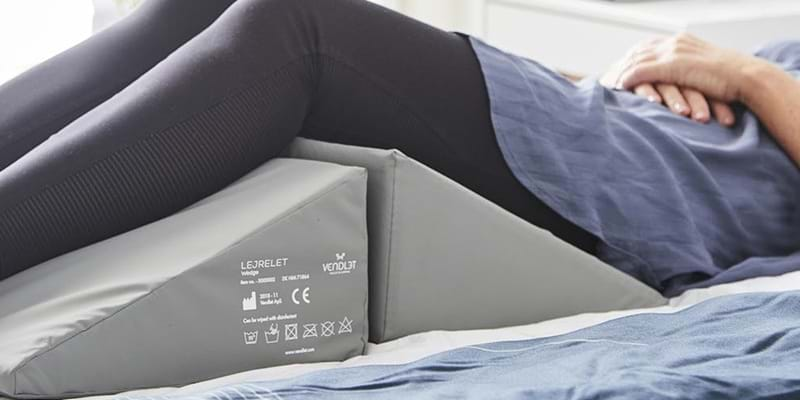
Why is Positioning Important?
We tend to focus a lot on the seated position and pay a lot of attention to the way clients are positioned in their wheelchairs and recliners. There is nothing wrong with that. Unfortunately, there just isn’t the same interest in the supine position.
25. July 2019
By: Physiotherapist, Peter Maindal
Over the course of a day, it is quite normal for the client to spend 16 hours in bed and 8 hours out of bed, for example in the seated position. When we look at the circadian rhythm this way, it becomes apparent that the positioning in bed is equally, if not more, important than the seated position.
When is Positioning used?
Positioning is relevant for all clients who are bedridden or lying in bed for an extended amount of time each day. This might be clients with decreased mobility and/or sensibility, clients with deformities, spasticity, pain and clients with pressure ulcers or those who are at risk of developing pressure ulcers.
Positioning is also relevant to clients with cognitive disorders such as Alzheimer’s and for clients that are restless and unpredictable. Furthermore, positioning is also relevant for clients with temporary conditions, e.g. clients that have undergone surgery or are pregnant.
Positioning is used when
- A patient has impaired mobility and / or sensibility
- A patient has deformities, spasticity or pain
- A patient has pressure ulcers or risks of pressure ulcers
- A patient has cognitive impairment
- A patient is restless or unstable
- A patient receives hygiene or dressing procedures in bed
As listed above, there are many situations in which a client would benefit greatly from positioning. Thus, positioning ought to be a natural part of treatment and preventative measures.
What can Positioning do?
Positioning in the supine position can both be used to make the client comfortable and for treatment and preventative measures.
Imagine a person with pressure ulcers on the sacrum and the tuberosities ischia on the left side. This client needs a solution that is mobilizing, while the tissue damages are taken into account and a sitting position ensures stability and relief of the area.
The client will also typically be given a pressure-relieving mattress, e.g. an alternating air mattress. Many will deem this as a good course of treatment. However, facts are that the pressure ulcer under the tuberosities ischia is caused by the seated position, while the pressure ulcer on the sacrum is caused by lying in bed.
This clearly illustrates why it is important to do a positioning that relives the sacrum when the client is lying in bed. A pressure-relieving mattress cannot do this alone, especially not when the amount of time spent in bed is taken into consideration.
When incorporating positioning into the supine position, it also becomes possible to work preventatively with pressure ulcers, which can improve recovery and healing.
Why Positioning is Important
When working with positioning, it is possible to provide clients with stability and comfort, which will leave them calmer and more relaxed. No matter the situation, these factors play a huge part in recovery.
It is also possible to position clients in ways that make certain procedures easier for the caregivers, e.g. dressing and hygiene procedures.
In situations like these, a position offering good stability will have a positive impact on the client’s sense of safety and will often also have a calming effect on anxious and outwardly reacting clients, thus improving the workplace health and safety.
Good positioning can in some situations even result in the ability to do certain tasks alone, e.g. hygiene procedures, and thereby free up a co-worker to perform other tasks instead. This also has a positive effect on the client’s dignity.
